OnePlus 3 Review - Screen and software Review
Screen and software
Long-term review: Does the OnePlus survive the challenges of everyday life?
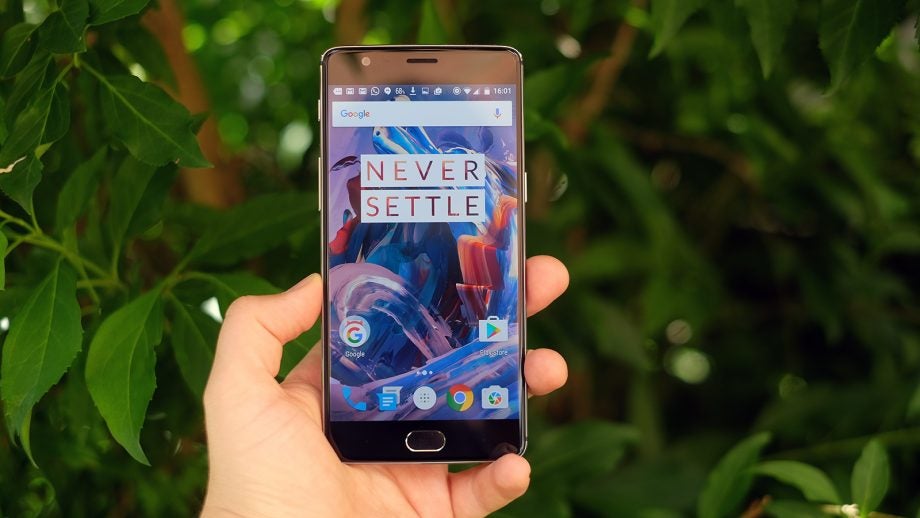
Sections
- Page 1 OnePlus 3 Review
- Page 2 Screen and software Review
- Page 3 Performance Review
- Page 4 Camera Review
- Page 5 Sound Quality, Battery and Verdict Review
OnePlus 3 – Screen
The first two OnePlus phones featured LCD screens. OnePlus had a crack at an OLED phone with the OnePlus X, and the OnePlus 3 continues that here with a Super AMOLED Samsung screen.
I had a few minor issues with the OnePlus X display, which mostly concerned brightness management, but these issues have been fixed with the OnePlus 3. It’s 5.5 inches across and has a resolution of 1,920 x 1,080 pixels, resulting in pixel density of 401ppi.
Related: Best Android Phones 2016
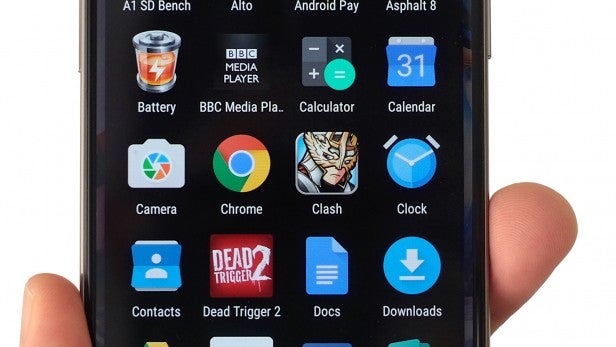
Sharpness is excellent and the black level is perfect. Like other recent Super AMOLED screens, viewing angles are superb, with far less a reduction in brightness if viewing off-angle than the OnePlus 2’s LCD panel.
However, my love for the OnePlus 3’s display wasn’t instant. I came to using the OnePlus 3 from the Samsung Galaxy S7, which has one of the best phone screens in the world. By comparison, the OnePlus 3’s colours are overcooked.
As a result, colours on the screen appear less natural than a display that’s been carefully calibrated to the sRGB standard. This also makes the amazing native contrast of the Super AMOLED panel a little less evident for much of the time.
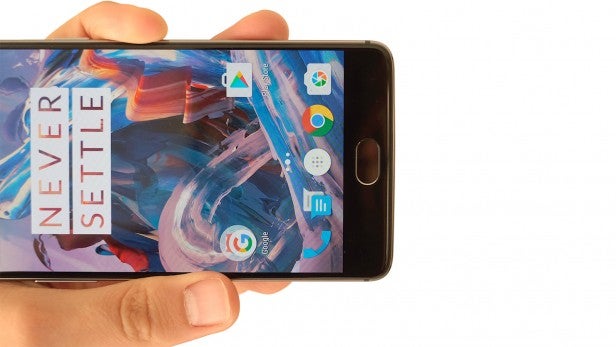
The OnePlus 3’s approach follows current trends, however. All other flagships have deliberately oversatured colour fresh out of the box, because it’s what people respond to. Even Apple has started to aim for standards other than the classic sRGB, with the iPad Pro 9.7‘s display aiming for the DCI-P3 cinema standard instead.
Despite all the additional customisation that the OnePlus 3 offers elsewhere, it isn’t possible to mute the colours as you can on the top Samsung handsets. There is, however, a colour temperature slider that alters the white balance a little, making it warmer or cooler.
This is a decent screen, with caveats that some people might not care about. The colour is deliberate, after all, part of what OnePlus calls “Optic” AMOLED, which describes OnePlus’ tweaking of Super AMOLED.
Outdoors visibility could also benefit from some improvement. It’s fine, but Samsung’s phones do better since they over-drive their OLED panels more aggressively, and dynamically alter colour and contrast to suit tougher conditions.
Buy Now: OnePlus 3 at Amazon.com from $516
OnePlus 3 – Software
The OnePlus 3 runs Android 6.0.1 with its OxygenOS interface layered on top.
While plenty has changed in hardware since the OnePlus 2, the software remains largely the same. Its look is that of pure Android, but OxygenOS digs its tendrils deep into it, adding elements of customisation that standard Android no longer has. Or never had.
These include the “Dark” mode, which turns the apps page and Settings menu black rather than white. Then there’s the choice of hardware or software soft keys I mentioned earlier. You can also make the soft keys work harder, by adding extra gestures such as making a long-press on the Back button fire up the camera.
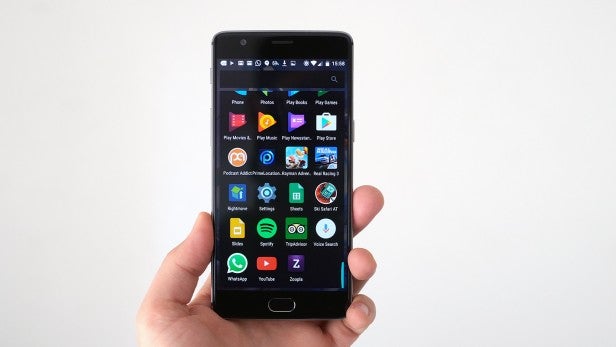
What’s important about all these minor performance-enhancing tweaks is that they’re not in your face. On the surface, the software appears much like Android Marshmallow, offering a more accessible feel than the CyanogenMod interface of the first OnePlus phone. You have to dig around in the Settings menu to discover all the extra goodies.
The one part of the OnePlus 3’s interface that’s quite obviously different is Shelf. This is an extra homescreen: simply flick to the right from the default homescreen and you’re there.
When you start using the phone, Shelf is simply home to your five most-used apps and a quick memo function. However, you can add the weather, a bunch of your most-used contacts and any Android widget of your choice.
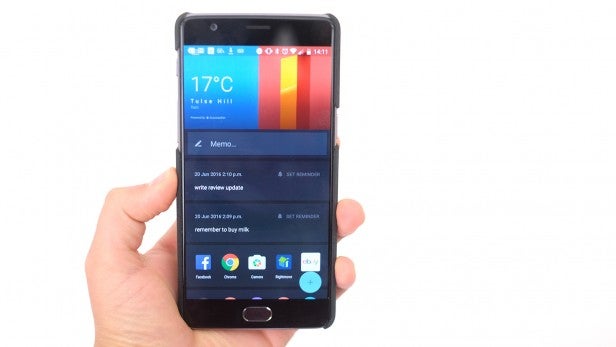
Personally, I didn’t use Shelf. Although it doesn’t offer anything I need, it does at least seem less useless than it did last year. There will be plenty of folk who may call upon it to check the weather and compile a quick to-do list each morning. Either way, it’s optional: you’ll be asked whether you want it at initial setup (granted, that’s before you really know what it is).
So with regards to the OnePlus 3’s software, there’s nothing terribly exciting or new – but that’s a good thing if the likely alternative is something new that doesn’t quite work.
How we test phones
We test every mobile phone we review thoroughly. We use industry standard tests to compare features properly and we use the phone as our main device over the review period. We’ll always tell you what we find and we never, ever, accept money to review a product.


